Stone Creek Vegetation Management Project

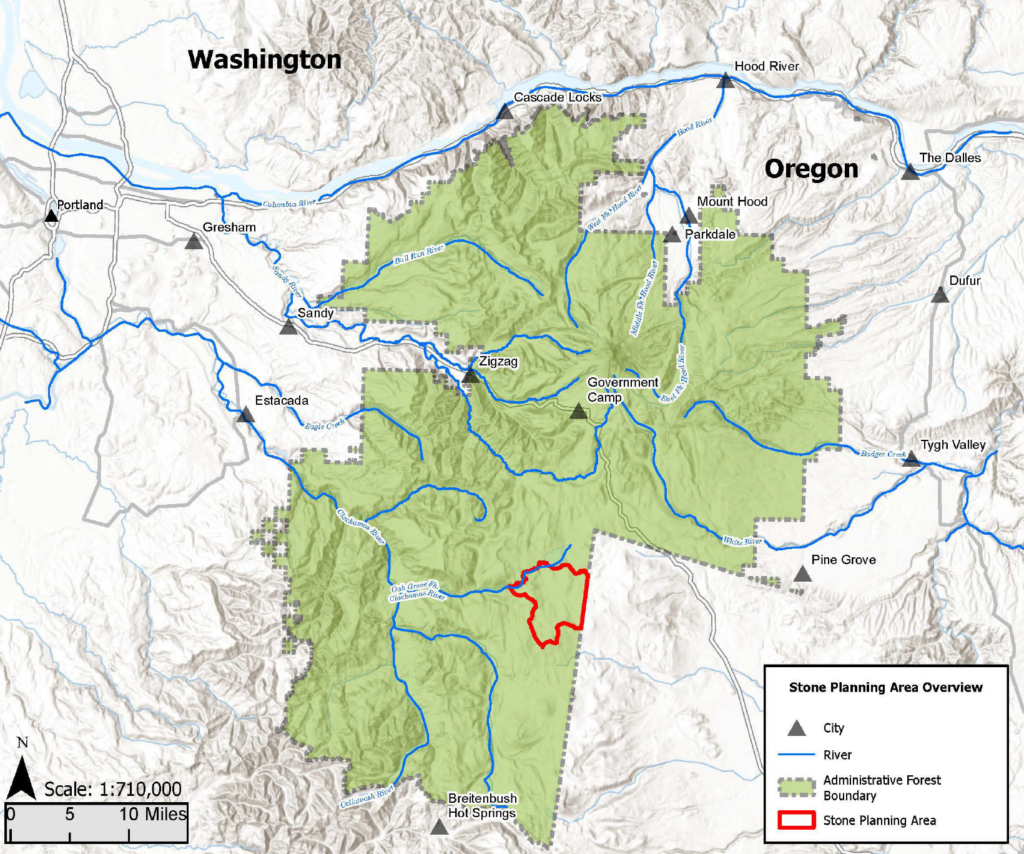
The Mt Hood National Forest is planning the “Stone Creek Vegetation Management Project” on the Clackamas River Ranger District. The Stone Creek project is just south of what is today known as Timothy Lake. This project is being planned as an Environmental Analysis (EA) which means we will get two chances to submit comments. The first comment period (scoping) closed on January 3rd. The second comment period closed on July 17th. Thanks to all those who submitted comments!
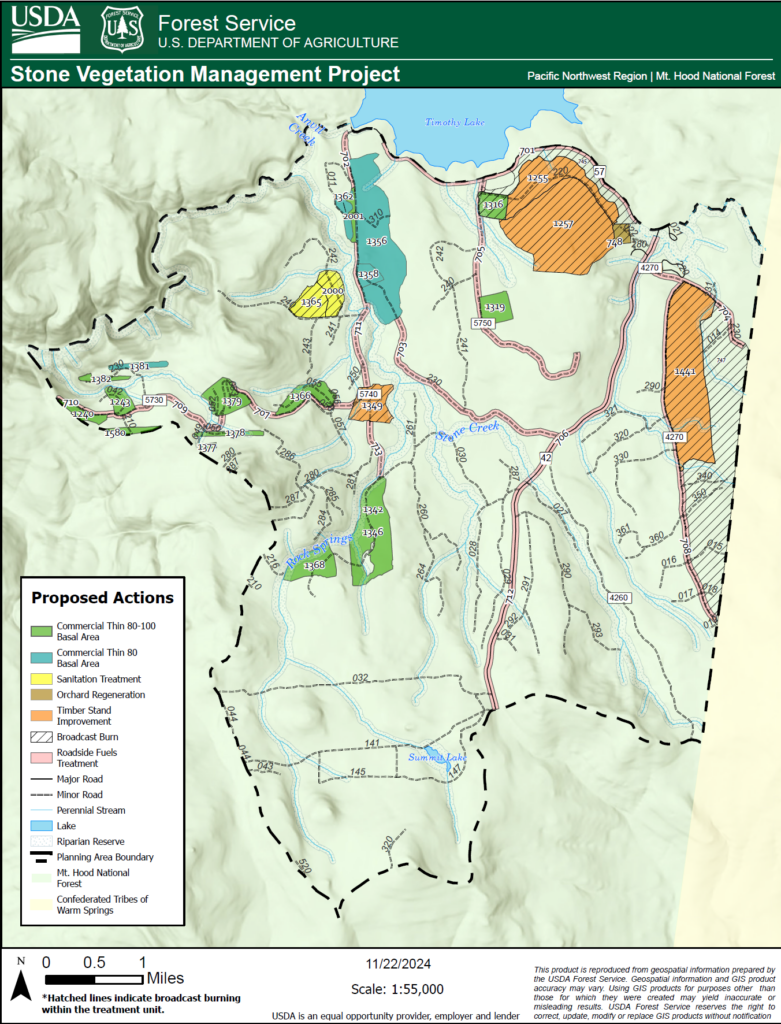
Here’s a summary of what is being proposed:
- The planning area is 17,318 acres, with 3,225 acres proposed for “vegetation or fuels treatments”.
- 930 acres of “non-commercial stand improvement treatments” in stands under 80 years old where the Forest Service would “target removing trees less than or equal to 10-inch diameter at breast height as a means of removing smaller trees and retaining larger ones.”
- 850 acres of “commercial thinning” in plantations under 80 years old.
- 91 acres proposed for “sanitation treatment”.
- The FS states that this 91 acre area (which was clearcut in the past) was replanted with lodgepole pine sourced from outside the region.
- They state these “offsite” lodgepole are not well suited for the site conditions and are dying. The FS wants to cut and remove these lodgepole pine.
- 1,190 acres are proposed for “understory burning” following non-commercial work.
- 667 acres along the eastern boundary of the project area (adjacent to the Warm Springs Reservation) are also proposed for a broadcast burn.
- A maximum of 660 acres of “fuels reduction treatments” would occur along forest roads 42, 4270, 4200-230, 57, 5730, 5750. This work would “…target removing trees less than or equal to 10-inch diameter at breast height and 6-inch diameter at breast height woody vegetation.”
- Width of these roadside treatments would vary to “…avoid or minimize impacts to sensitive habitat…but would not exceed 150 feet from the edge of the roadway.”
- “Large diameter trees within the roadside fuels reduction treatment areas would be retained.”
- The Forest Service is proposing to clearcut the 17 acre “Monticola Seed Orchard” that was established in 1972 to grow western white pine that are resistant to white pine blister rust disease.
- However, “Genetic testing has shown that the trees on the site are not resistant to white pine blister rust.”
- “Following harvest, the stand would be included in adjacent prescribed fire treatments and planted with a tree species that has desirable genetic traits…”
- 2 miles of road are proposed for “passive decommissioning”
- ~20 miles of roads are proposed to be downgraded from “ML2” (Roads are maintained for high clearance vehicles) to “ML 1” (Roads are closed to motor vehicle use).
- Roads proposed for closure would be “storm-proofed”. Storm-proofing can mean many things, like removing or upgrading culverts or stabilizing fill material at stream crossings. Overall, it is intended to reduce the likelihood of streams becoming hydrologically connected with roadways.
What does Bark think?
Bark staff and volunteers spent time scouting and groundtruthing the project area in summer 2024. In addition, Meg, Bark’s Restoration Program Manager, and volunteers got their feet wet surveying the many wetlands in the area. We prioritized surveying the most sensitive or complex habitats and thankfully most areas we surveyed are not proposed for commercial logging by the Forest Service. We have been back out there in 2025 to continue our groundtruthing and documentation efforts (see “current conditions” section below).
- Tribal Inclusion
- Tell the Forest Service you support meaningful collaboration with the Confederated Tribes of Warm Springs and incorporation of Indigenous knowledge and management strategies.
- This project takes place on the historic homelands and ceded territories of the Confederated Tribes of Warm Springs and shares its eastern boundary with the present-day Warm Springs Reservation. Bark has been happy to hear that the Forest Service has been in discussions with the Tribes regarding Stone Creek and future projects. Lend your support for the Tribes by telling the Forest Service to take their recommendations seriously.
- Wetlands
- Advocate for wetland protections! Meg and Jordan have already been in conversation with USFS staff about the many wetlands and meadows scattered throughout the project area. We shared survey data which showed that many wetlands extended beyond their mapped boundaries. These sensitive wetlands and meadows need protections from disturbance by heavy machinery.
- Advocate for wetland and meadow restoration! Early on there was some discussion of including wetland restoration as part of this project, and we are disappointed to see that the Forest Service is not proposing wetland restoration actions in the draft EA. The wetlands in the area are in various states – from intact, carbon rich peat bogs (Meg’s favorite!) to wetlands encroached by conifers from a lack of beaver and stewardship with fire. As our climate warms, it will be critical we take actions that keep water high up in the watershed for as long as possible, ensuring our streams and rivers run cool and clear even during droughts.
- Dispersed Camping
- Advocate for the remediation and restoration of problematic dispersed camp sites! The area around Timothy Lake is an extremely popular destination for camping and recreation. Unfortunately, that also means that many of the dispersed camping areas are filled with trash, biological waste, or allow vehicles to drive through streams and sensitive riparian areas. Again, early dialogue with the Forest Service mentioned work to restore and improve problematic campsites, and we are disappointed that those proposed actions are not included in the draft EA.
- As just one example, there is a trashed dispersed campsite along one road slated for closure (5740-242). Bark is advocating that this trash be cleaned up prior to the road closure.
- Commercial Logging & Non-commercial “Timber Stand Improvement”
- Advocate that the FS leave large trees and other biological legacies (old trees, snags, large downed logs)! Much of the complex late-seral forest in the area was logged in the 70s – 90s (see aerial imagery below) and replaced with tree plantations that lack species diversity, structural diversity, and fire resiliency. But as Bark groundtruthers have proved in the past, not all plantations look the same once you’re in them on the ground. Sometimes past logging left large trees, snags, and logs which are critical habitat features in plantations that lack diversity.
- Many of the units were cut in the late 60s/early 70s using a “shelterwood” cutting technique which logged much of the older forest but left some mature trees. See photos of unit 1356 as an example of how these areas look like today. It is important that the Forest Service retains mature trees and large fallen logs, as these are critical components of diverse older forests.
- 91 acre “sanitation treatment” (Units 1365 & 2000): As mentioned above, Bark briefly visited this area in summer 2024, then returned for a more complete survey in 2025. We confirmed there are many dead and dying “offsite” lodgepole pine. Even today, some 50 years later, the ground showed signs of being churned up and compacted from a time when logging operators were allowed to drive machines all over without restriction. The area seems to be stuck in a loop, where lodgepole are regenerating, growing 10-20 years, and then dying.
- Advocate that the FS leave large trees and other biological legacies (old trees, snags, large downed logs)! Much of the complex late-seral forest in the area was logged in the 70s – 90s (see aerial imagery below) and replaced with tree plantations that lack species diversity, structural diversity, and fire resiliency. But as Bark groundtruthers have proved in the past, not all plantations look the same once you’re in them on the ground. Sometimes past logging left large trees, snags, and logs which are critical habitat features in plantations that lack diversity.
- Fire
- Support the use of fire, and advocate to use it more! Bark is a strong advocate for using fire to manage these forests and we appreciate the FS for including the use of fire in this project. It also looks like they are taking steps to prevent large trees from inadvertently being killed by fire. This area would have seen fire much more frequently prior to colonization by Euro-Americans. Lightning storms ignited fires that burned in mosaic patterns across the landscape. Indigenous families and Tribes used fire to shape and manage this ecosystem since time immemorial. Indigenous management practices helped to shape this ecosystem and support high levels of biodiversity.
- Roadside Fuels Treatments
- We appreciate that roadside fuels treatments could facilitate the return of beneficial fire to this landscape, but we are keeping a close eye on this proposed action. Often this type of work is done with masticators (think giant brush grinding machines) that lack precision. Some of this roadside fuels work would take place in older stands, and while the FS is not planning to cut large trees, we are certainly concerned over any proposal to move large machinery around in old stands.
- Road Closures and Decommissioning
- Bark supports the inclusion of road decommissioning and closure into the proposed actions. If you have followed Bark for a while, then you are already well aware of the impact that roads have on forest ecosystems.
- Advocate that the FS takes action to prevent unauthorized access of roads after they are closed. They often do this by building large berms and/or placing logs and boulders at the start of the road.
- Advocate that the FS remove culverts and stabilize the roadbed wherever these roads cross streams.
Current Conditions
- Unit 1349 (Surveyed summer 2024)
- Unit 1368 (Surveyed summer 2024)
- Units 1356 & 1358 (Surveyed June 2025)
- Units 1365 & 2000 (Surveyed June 2025)
- Unit 1377 (Surveyed July 2025)
- Unit 1378 (Surveyed July 2025)
- Unit 1379 (Surveyed July 2025)
Roads Proposed for Closure/Decommissioning
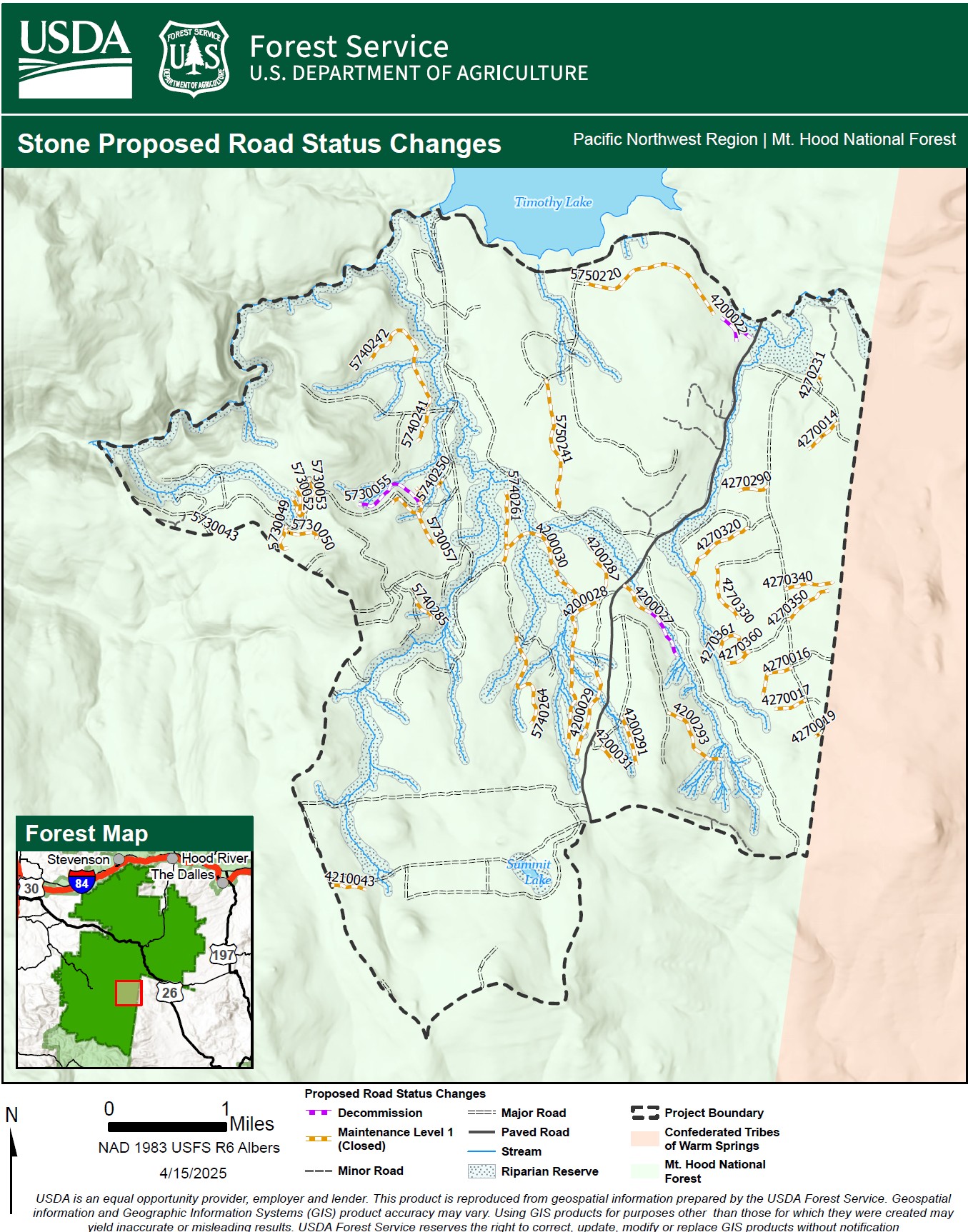
- 4200-027 (Surveyed June 2025)
- 4200-029 (Surveyed June 2025)
- 4200-287 (Surveyed June 2025)
- 5730-049 (Surveyed July 2025)
- 5730-050 (Surveyed July 2025)
- 5730-052 (Surveyed July 2025)
- 5730-053/45 (Surveyed July 2025)
- 5740-242 (Surveyed June 2025)
- 5740-285 (Surveyed June 2025)
- 5750-241 (Surveyed June 2025)
Past Conditions
A collection of aerial images of the Timothy Lake/Stone Creek project area can be found below. Notice the mosaic pattern caused by fire, visible towards the bottom of the photographs. Notice the wetland complex that was covered by the lake after the dam was built. Notice all the roads being built, and the patchwork of clearcuts. That’s a lot of change to the landscape in just one person’s lifetime!

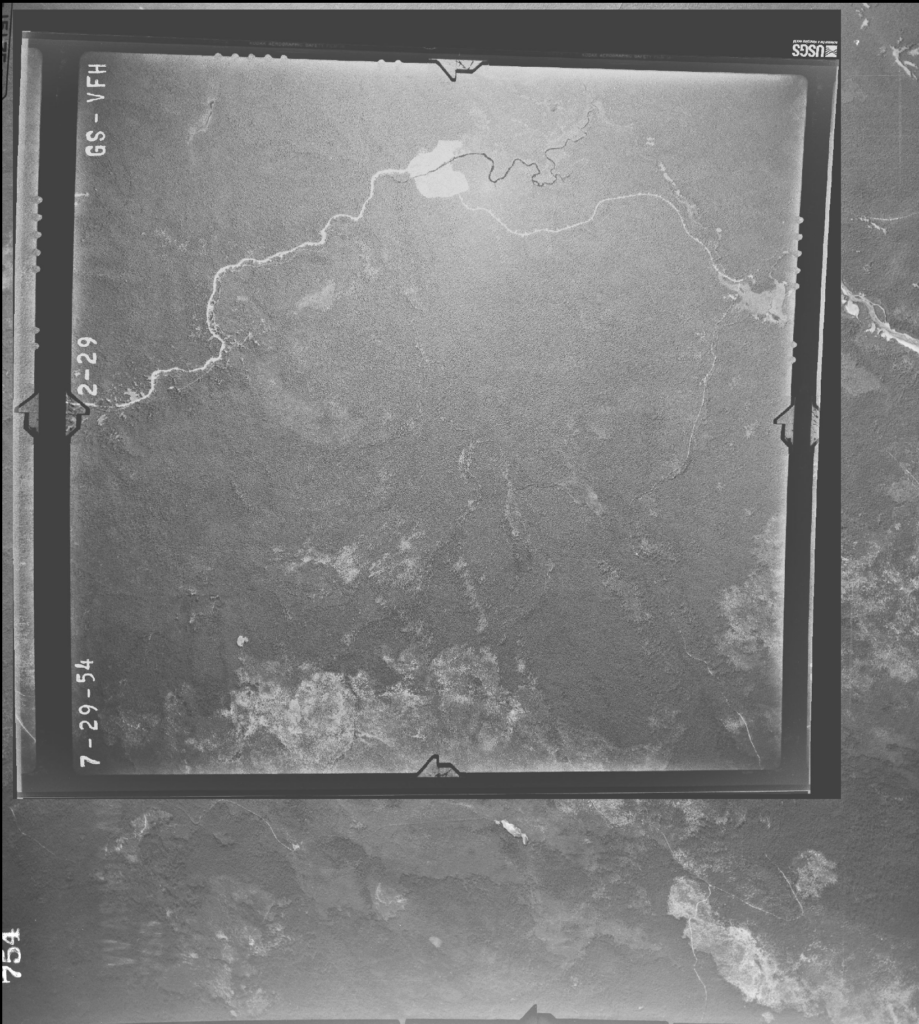
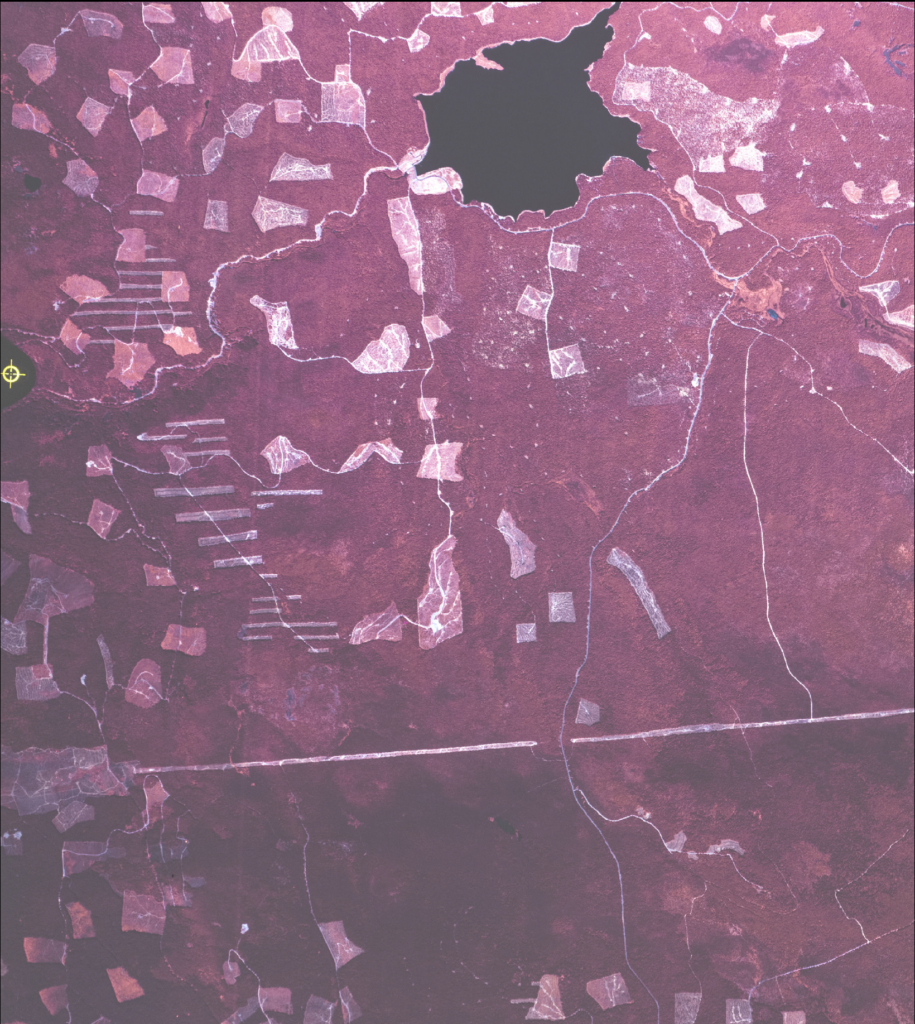

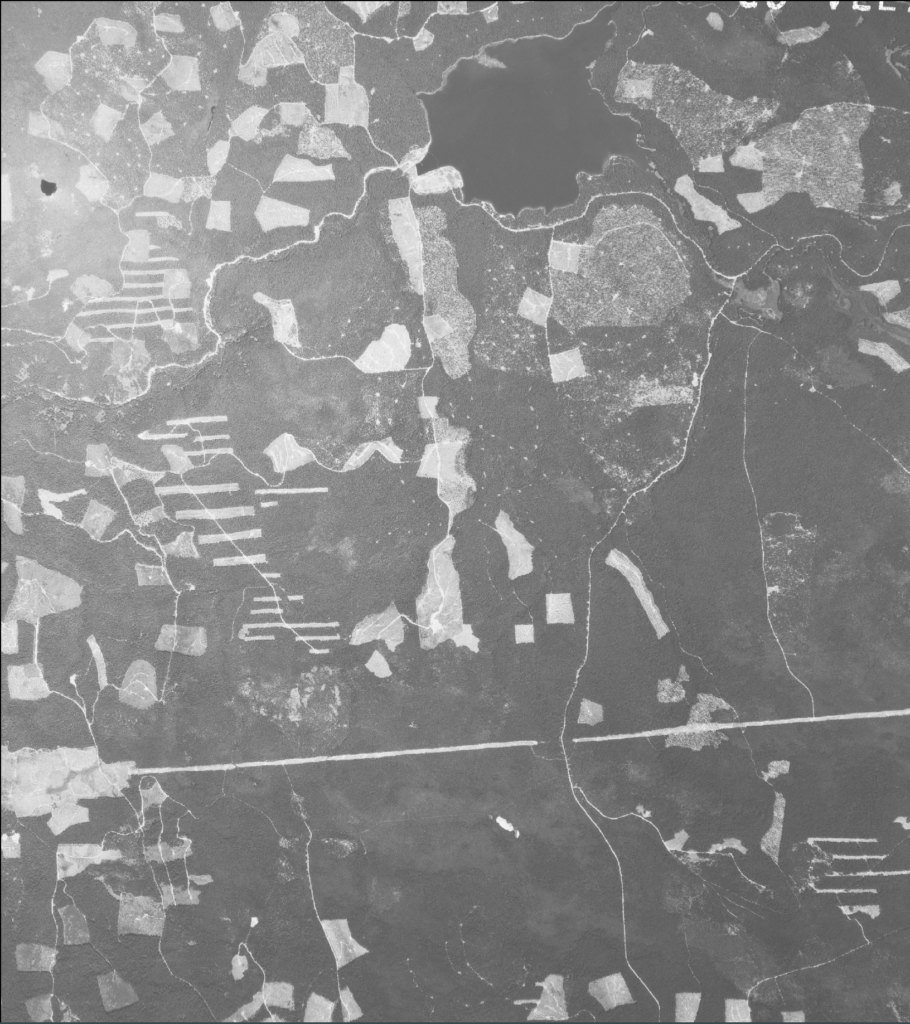

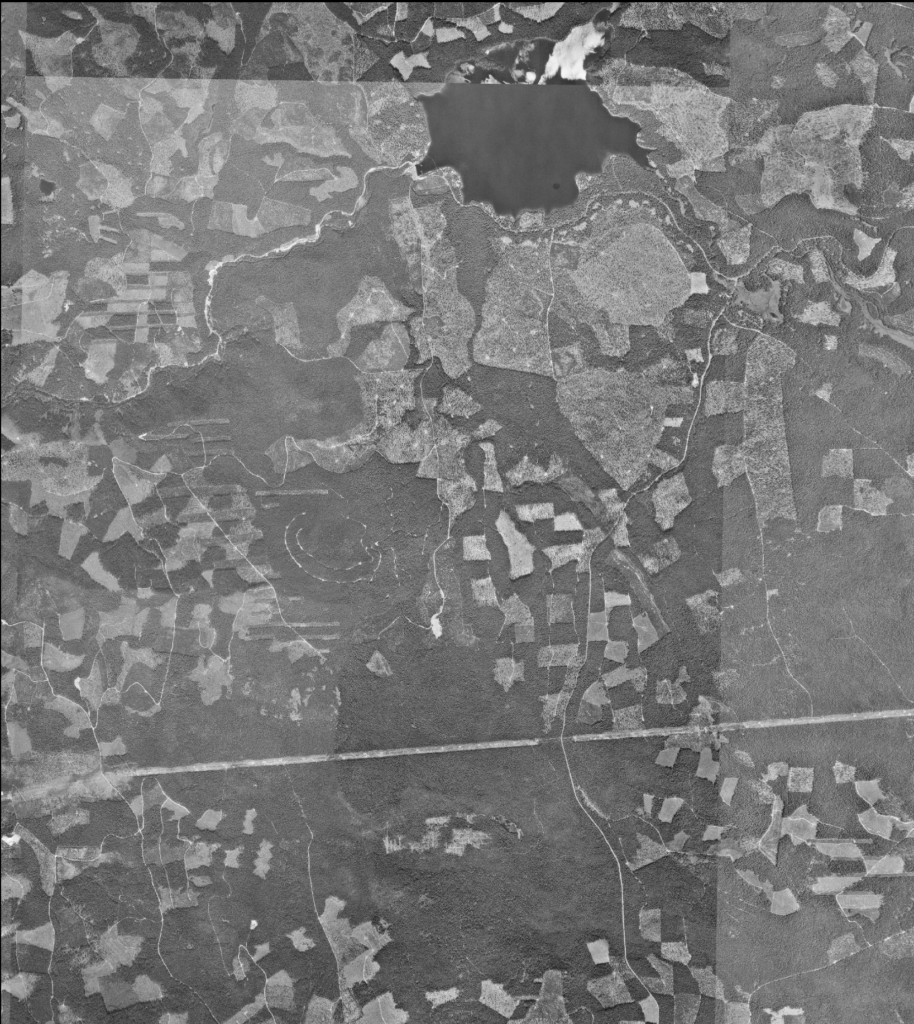
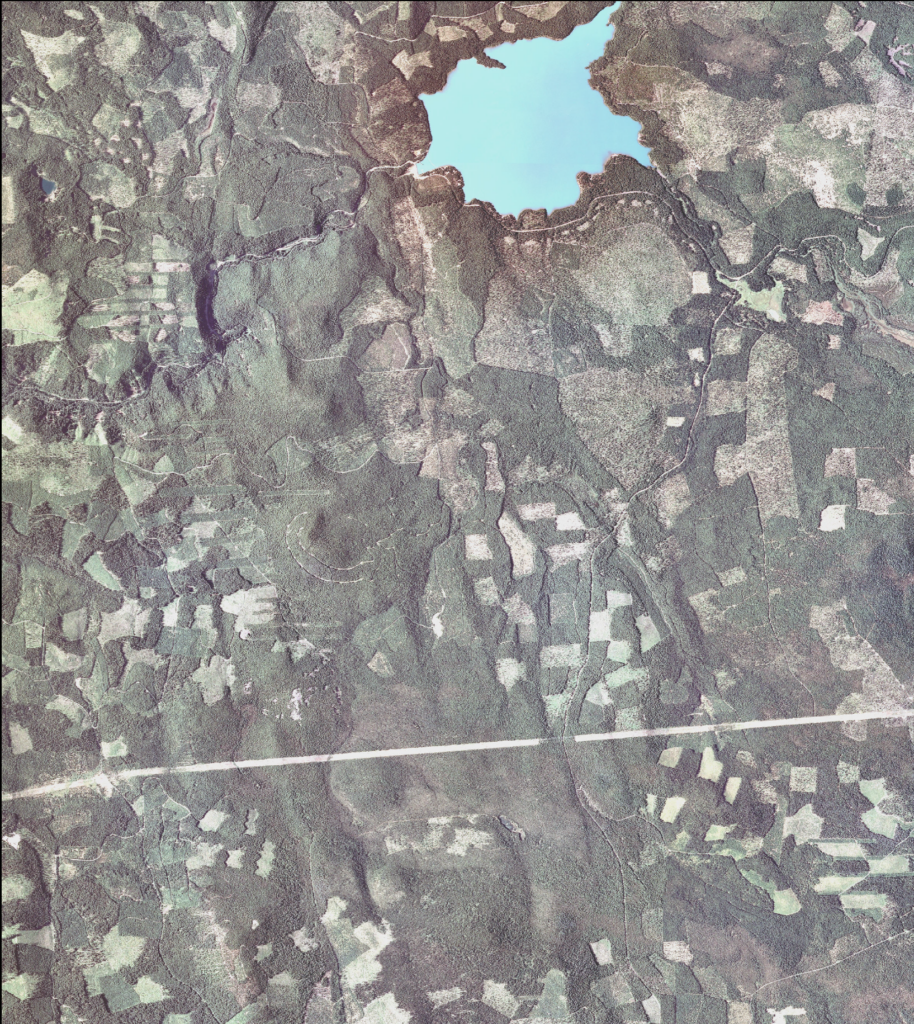
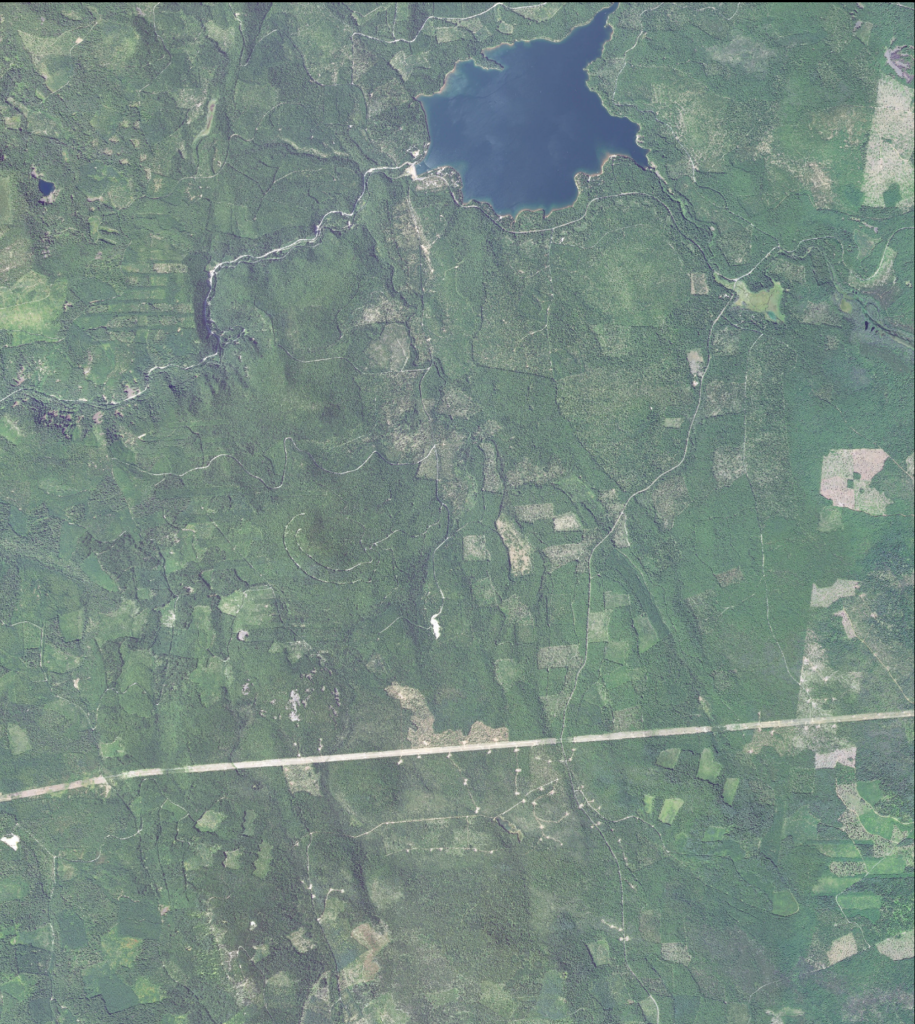



Resources for Comment-Writing
Scoping Letter
Scoping Maps
Scoping Comments
Forest Service page for Stone Creek Vegetation Management project
Stone Creek – Bark Google Drive Folder
Associated Files